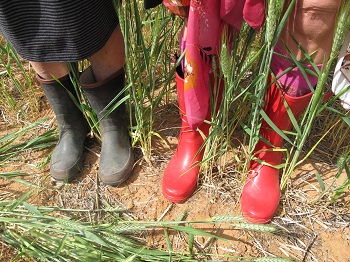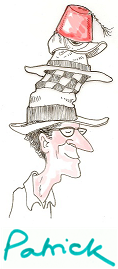Beauty and the bush
 These boots are made for working |
City life is seen, conventionally, as stressful. We suburbanites often idealise rural life.
Birds singing, paddocks bursting with grain, scenic hills, maybe a valley or two . . . Many people who do live “in the bush” do enjoy it. The ease of car travel, for example, means that they can easily get up to metro shopping malls or high streets dripping with cappuccino cafes. There is stress, however, beyond the suburban boundaries. On a recent visit to the Western Australian Wheatbelt I heard a farmer’s candid lament on how profits had not kept pace with profits. “We get the same price for what we produce, same as a decade ago, but today we have to pay much more for power, fertiliser and fuel.” Farmers are traditionally grumblers, according to the cartoon version perpetrated mainly by metro dwellers. Rain has come too late, too early, too much, too little . . . And the wind, oh my goodness. Yet they have a point. My wages are not buffeted by storm and drought. A howling wind may spoil my walk with my dog in a park, but it is an inconvenience, not a disaster. |
What may help? A visit to the Wheatbelt, definitely. There are cafes there too. Last month I shared lunch in one on Narembeen’s main street, chatting to a couple who have lived in the district all their lives. At the adjoining table a few local veterans were celebrating a 50th wedding anniversary.
The weekend offered a series of social and cultural events: visiting a Grain Discovery Centre that shows how the area has produced food for a century; enjoying a ceremony for the official opening of a community shed; and a lunch for more than 100 ladies who heard guest speakers extol the local importance . . .and the contribution to the national economy . . .of agriculture. Fertile ground for thought indeed.
|

